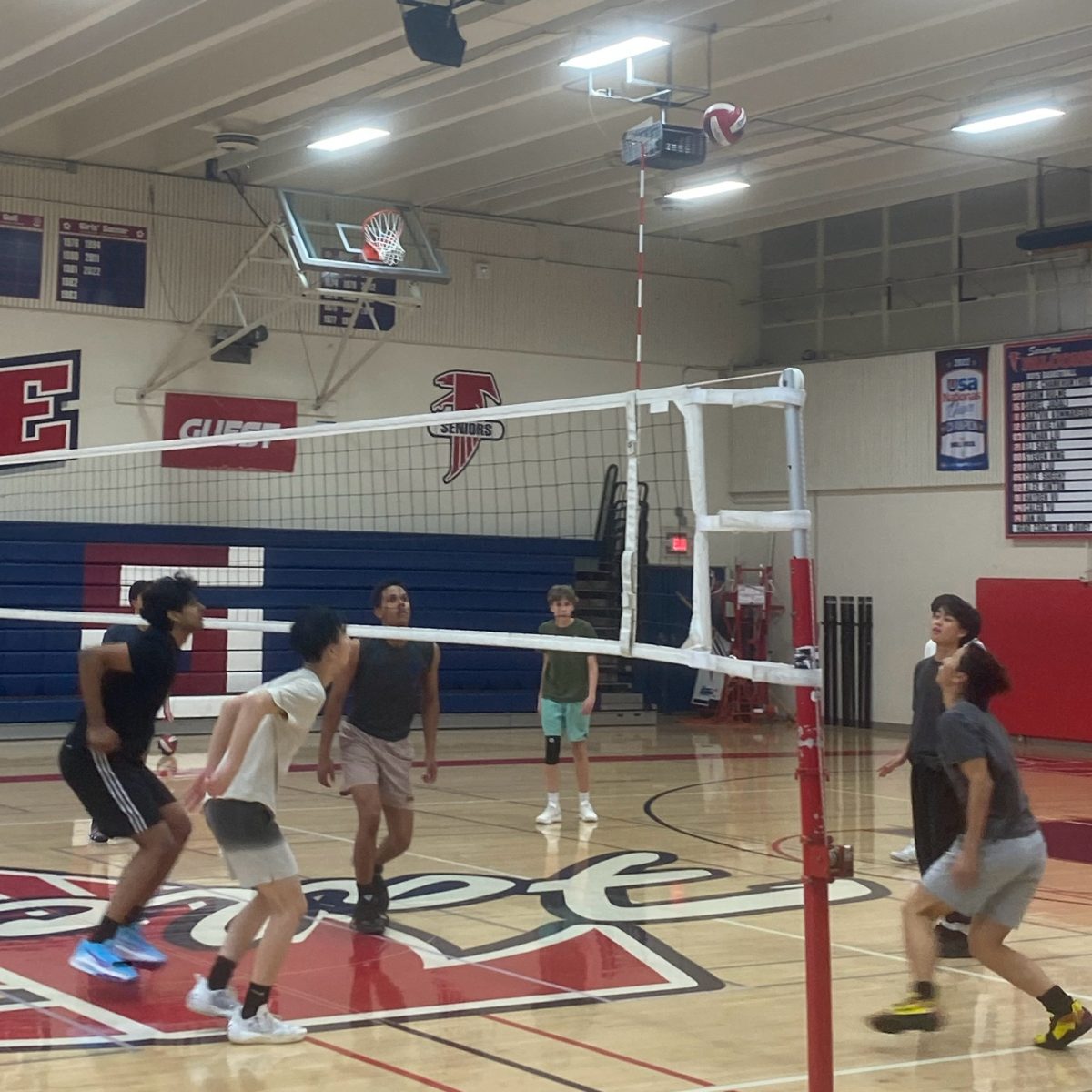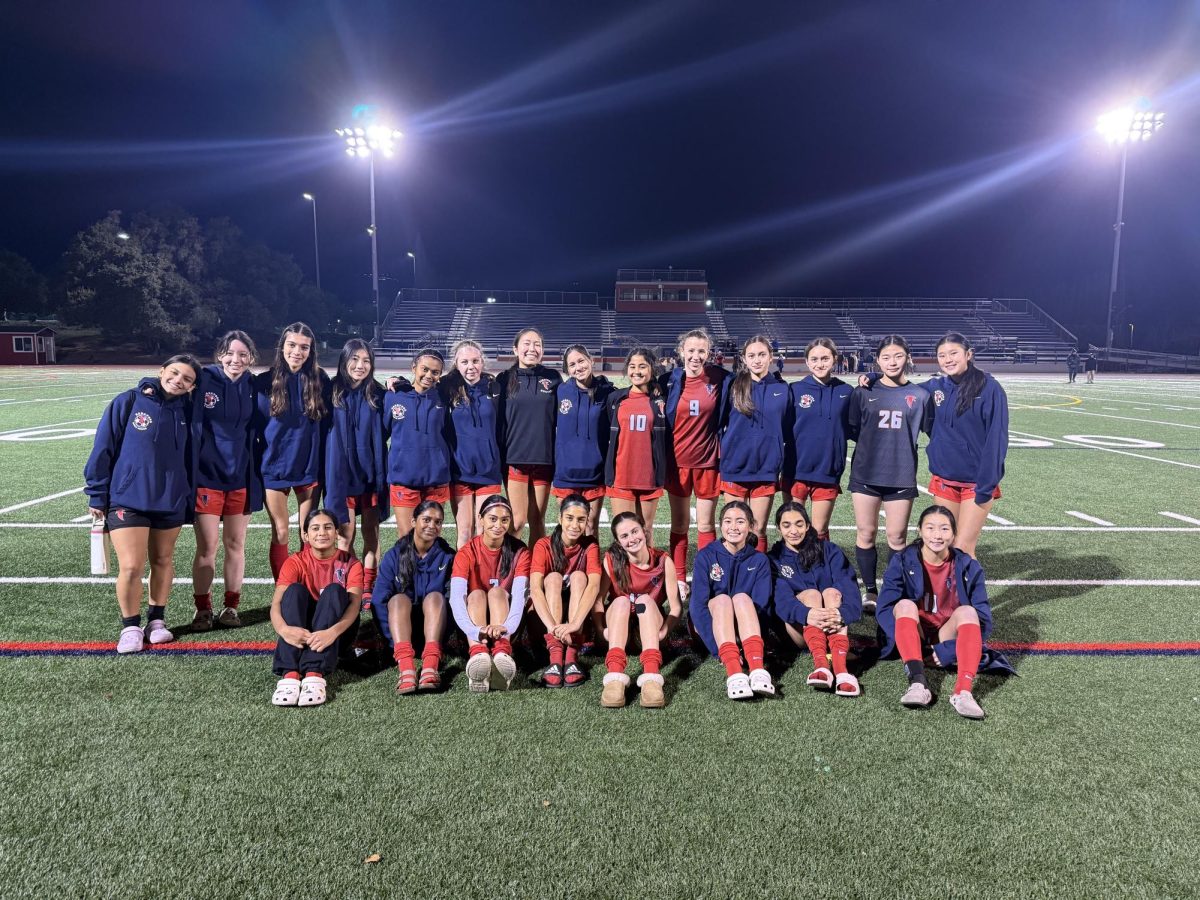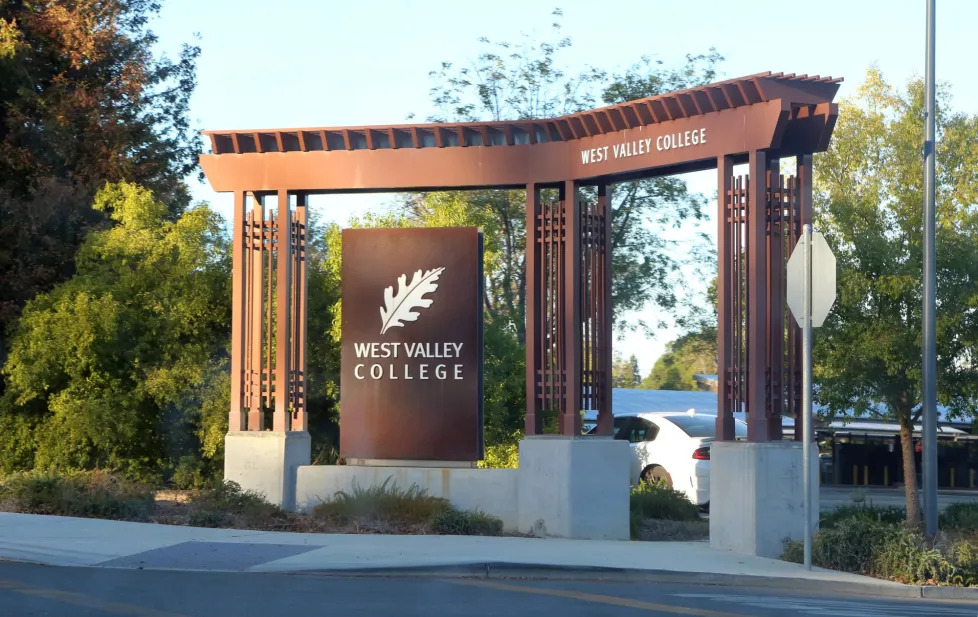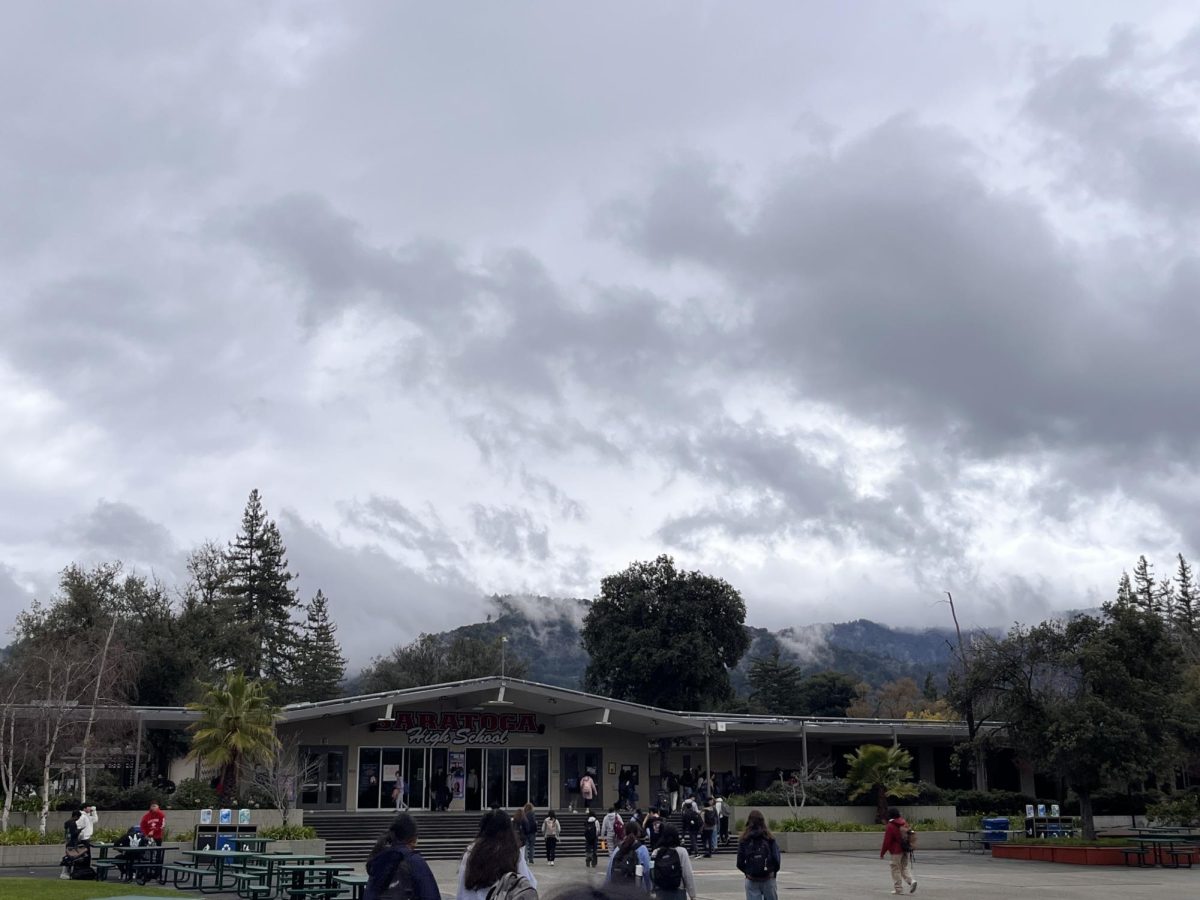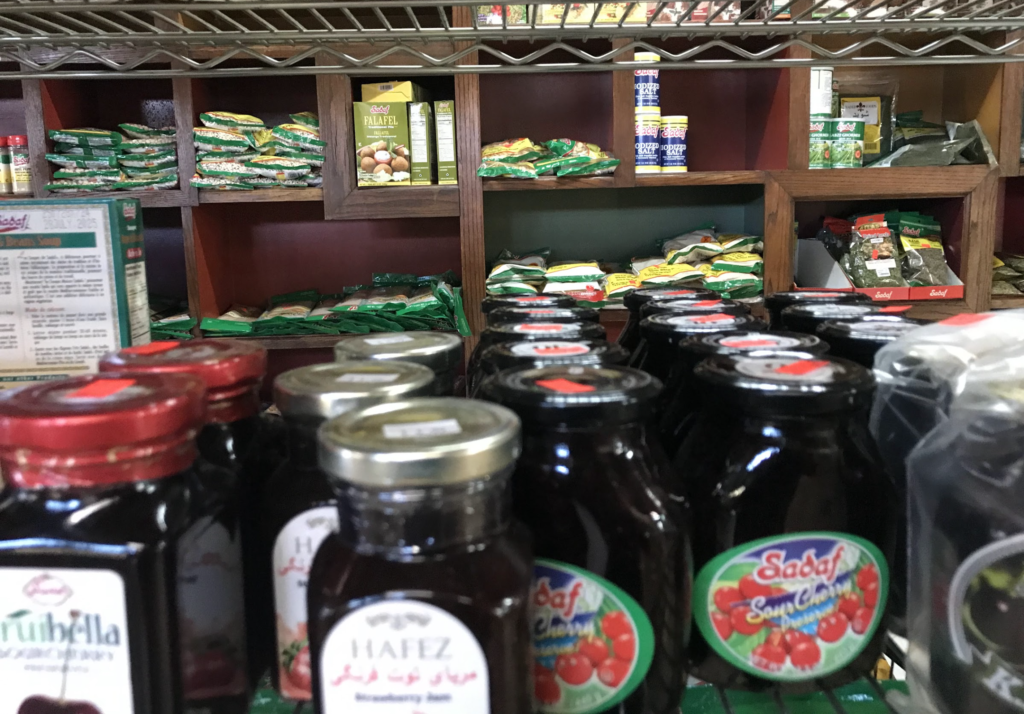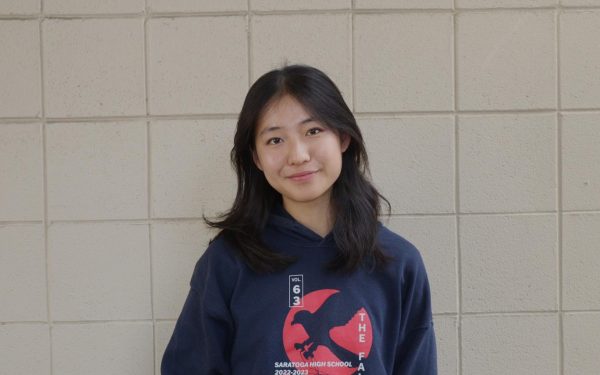Walking into Rose Market in downtown Saratoga on a late Saturday afternoon, customers are greeted by cashier Ali Meshkat. To the right, cooks roast kebabs on a lively, flickering fire for pick up and walk-in orders. The store is filled with multicolored jars, boxes and bags — there are pickled vegetables, a spice wall, fresh fruit, yogurt and sangak (a thin, Iranian flatbread).
Junior Shayda Oliaei, who is of Iranian descent, frequently visits Rose Market with her family for the rare traditional ingredients found in few other stores, ranging from nabat (saffron sugar crystals served with tea) to nan ghandi (a type of sugar loaf bread).
“Going inside, being greeted by Iranians speaking Farsi and smelling the familiar spices of cardamom and saffron makes me feel like I am in a marketplace in Iran,” Oliaei said. “I am very grateful I live in an area where I have the opportunity to experience a small taste of Iran, the country and homeland I’ve never been to.”
Despite never having visited Iran, Oliaei often regularly eats its cuisine: Her family eats authentic dishes at least once a day, usually for dinner. In her family, Americanized food is a rare last resort reserved for busy weeknights.
Her family rarely eats out, instead preferring to make traditional dishes, usually consisting of rice, stew and meat, from scratch. One of her favorite foods is khoresht-e ghormeh sabzi (a beef and herb stew widely regarded as the national dish of Iran), which is often served alongside tahdig (a scorched rice dish).
Growing up, Oliaei celebrated birthdays and Iranian festivities such as Nowruz — the Iranian New Year — with her family, enjoying her favorite stews such as khoresht-e fesenjan (a walnut and pomegranate stew) served on Shabe Yalda (the Winter Solstice), accompanied by an array of fruits like pomegranates and watermelon. She and her family also enjoyed Persian desserts like nane nokhodchi — butterfly-shaped cookies made from chickpea flour and flavored with rosewater — pistachio and cardamom during the holidays.
Her family often shops at Kandoo Café, located in downtown Saratoga, for Persian sweets during these celebrations.
“We always buy traditional Iranian sweets, like raisin cookies, nan nokhodchi and masghati,” she said. “We like to display them on the New Year’s altar, Sofreh-e Haft sin, with other traditionally used items, such as flowers, candles, coins and painted eggs.”
Outside of special occasions, Oliaei’s family shops at Rose Market every couple of weeks. Though they can go to Trader Joe’s and Safeway for their bread, pasta and potato chips, Rose Market provides foods such as Iranian tea, rob-e anar (pomegranate molasses), nan ghandi and higher quality rice, which are culturally significant to Oliaei.
“Having cultural grocery stores so close by definitely makes me feel more connected to my culture,” she said. “Traditional Persian cooking uses a lot of somewhat obscure ingredients that aren’t widely available, so if we didn’t have these stores, we probably wouldn’t be able to cook most Persian foods at all.”
High immigrant population fuels growth of ethnic grocery stores
In Saratoga, where, according to the 2020 census, 41.7% of the population are immigrants and 56.5% are non-Caucasian, buying from ethnic grocery stores is the norm rather than an exception. Especially for the city’s large Asian population comprising 49.6% of the total population, many go to 99 Ranch Market, India Cash and Carry, or HMart more often than they go to Safeway or Trader Joe’s.
According to a study by LoyaltyOne, 63% of U.S. ethnic customers feel that the conventional grocery store they visit does not provide sufficient ethnic foods — with 59% making visits to at least three other cultural grocery stores to find their desired products. Another study by Acosta found that ethnic consumers tend to visit a greater average number of stores: Hispanic, Asian-American and African-American customers visited 3.84, 3.53 and 3.33 stores respectively, compared to 3.26 for Caucasian buyers.
Grocery shopping habits have over time become linked with ethnicity, as people tend to buy food from their heritage. Unsurprisingly, the same study found that 49% of Hispanic, 46% of Asian-American and 41% of African-American customers bought their grocery products from store brands of their own culture, versus just 26% of Caucasian customers.
As shoppers nationwide found themselves scouring their local supermarket’s aisles for their favorite kimchi or Chinese salted plums, grocery stores in the U.S. met this need by catering to diverse populations. The country’s ethnic supermarkets industry now has a market size of $49.5 billion in 2022, after growing on average 2.1% annually in the last 5 years.
Saratoga, and the greater Bay Area, falls in line with this trend. With an increasing immigrant population in part fueled by Silicon Valley’s tech boom, demand for cultural food has rapidly grown: Alongside the sea of flourishing restaurants such as Din Tai Fung and Zeni Ethiopian Restaurant, ethnic supermarkets ranging from Las Palmas Mercado Y Carniceria to Slavic Shop have sprung up to feed people living in the South Bay.
High demand through the last few decades has also allowed immigrant-founded stores such as Rose Market to expand to multiple locations in Mountain View, Cupertino and Saratoga since its founding in 1988.
Stores across the region and the country continue to be where not only authentic ingredients, but conversations with an ethnically familiar community, can be found. In Acosta’s survey, greater percentages of ethnic shoppers who were surveyed (72% African-American, 65% Hispanic, 61% Asian-American, 56% Caucasian) found the routine act of buying food to be an enjoyable experience.
Japanese marketplace imports quality goods
In order to serve the large Japanese population in the Bay Area, it is of utmost importance for Japanese grocery stores to maintain high quality and productivity for their customers.
Mitsuwa Marketplace in San Jose, a Japanese chain supermarket formerly known as YAOHAN, was opened in February 1998 and offers popular Japanese culinary essentials like rice and Napa cabbage, beauty products, Japanese confectionary shops and a food court.
In 2007, Mitsuwa continued to expand throughout California to areas with a large Japanese population, said San Jose store manager Yasuaki Kishimoto. He was initially hired at Mitsuwa’s Torrance branch, a city in the Los Angeles metropolitan area in 2007, but later moved to the San Jose store in 2016 and has been working there since.
As the store’s manager, Kishimoto and his team have been able to form relationships with their customers, despite restricted occupancy during the pandemic.
Kishimoto has found that as a Japanese grocery store, Mitsuwa is able to provide high-quality Japanese products, seafood and customer service that sets them apart from American supermarkets like Safeway and Costco.
The store offers regular Japanese grocery items such as assortments of rice, vegetables and snacks, but also a wide variety of fresh fish and American wagyu beef (an expensive type of heavily marbled meat from Japanese-American crossbred cattle).
They ship a majority of their items from Japan to maintain authenticity, particularly during holiday seasons. Since shipping products from Japan takes around a month, products that require temperature control are transported in refrigerated or frozen containers, and items with a short shelf life are transported by air.
“During the holiday season, we sell specialty sweets from all over Japan,” Kishimoto said. “In front of the demo kitchen located at the entrance of the store there are display tables [with those specialty sweets].”
Because of the time-intensive work required to bring each kind of product from wholesale to storefront, the store is separated into departments, such as the fish department. They are responsible for ordering the fish from wholesale vendors, inspecting it for quality and freshness and preparing it for customers. For this model to work Kishimoto said, the most crucial aspect of the store is teamwork among the employees.
“A store cannot be run by one person,” he said.
Junior Minh Do, a foodie who enjoys baking and cooking in his free time, always finds inspiration from ingredients at Asian grocery stores like Mitsuwa and HMart.
“I go [to Mitsuwa] if I have a big event like my parents’ recent anniversary, so I can bake for them,” Do said. “They have lots of really classy sweets and niche products like sakura mochi, which you would never find anywhere else, even in some other Japanese grocery stores.”
For Do, cultural grocery stores not only provide higher quality products, but also a large assortment of ingredients that typically are not present in American supermarkets.
“I feel like American supermarkets are repetitive — they have 50 brands of tortilla chips, but they wouldn’t necessarily have Turtle Chips [four-layered chips resembling a turtle shell] or honey butter chips, which is an HMart staple,” Do said.
Despite being of mixed Chinese and Vietnamese heritage, Do often falls back on Japanese and Korean cuisine for quick meals. At Mitsuwa and HMart, he buys instant foods like dashi stock (a fish-based soup stock), tofu beancurd, jajangmyeon (black bean noodles) and frozen noodles that are not only quick to prepare in the absence of time, but are also very filling and comforting.
For him, such cultural grocery stores are irreplaceable.
“These stores are definitely integral to my life as well as my family’s life, because they really make me happy,” he said. “I always look forward to going to cultural grocery stores and just seeing where they take me.”
Junior finds comfort in familiar foods from Asian grocery stores
As a student who grew up in the Shanghai province of China, standard grocery stores provided all of the food products that junior Isabella Wang consumed in her day-to-day living.
However, in 2015, Wang moved to the U.S. with her mother and her sister, Class of 2018 alumna Camilla Wang, when she was just 9. After arriving in the U.S., Wang found her favorite snacks and foods in Chinese supermarkets like Marina Food and Ranch 99.
“One of the snacks I really liked as a little kid was Xiao Wangzi Mian [also known as Prince Noodles, crumbly bits of seasoned ramen noodles] and they have that right here at Ranch 99,” Wang said. “But they don’t really have the ice creams that I used to have in China, which was really sad. I loved ice cream as a kid, but in the U.S., there’s only Häagen-Dazs and Drumsticks.”
Nevertheless, Wang is able to enjoy familiar, authentic Chinese food from restaurants like Din Tai Fung and 85 Degrees Bakery, which she says cannot be found in the “hard, weird-tasting Costco dumplings.” Wang fondly remembers when her sister worked at Wang Zai Guang Chang, a Chinese food court where she would get popcorn chicken after her summer school classes from friendly Chinese store owners.
“It’s nice that these grocery stores have exactly what Chinese ones did, so that I don’t have to eat burgers and fries everyday,” she said.
Away from childhood home, history teacher rediscovers Desi flavors
History teacher Bismah Siddiqi grew up relying on cultural grocery stores for ingredients used in authentic meals.
Growing up in Davis, she would come home from school to find her mother cooking Desi dishes heaped with lentils, fried fish and spinach. Siddiqi, who is Pakistani, recalls watching her mother measure ingredients through a finely honed sense of pinches or splashes rather than tablespoons or cups. Food played an important role in Siddiqi’s household: She could always find her mother ready with food and a platter of nuts and dates for her to snack on.
Since Siddiqi is Muslim, she also partook in Ramadan and the specific foods associated with it. She often ate dates, samosas and fruit salad when she broke her fasts and drank beverages such as Rooh Afza, a concentrated rose syrup often mixed with cold milk to combat the sweltering summer winds in the northern Indian peninsula.
“Food was definitely a large part of our culture,” said Siddiqi. “One of my goals would be to learn more recipes from my mom, because I don’t necessarily want to lose that as I grow older.”
Though Siddiqi has felt “a little bit disconnected” from cultural foods since moving out of her family home, she still regularly visits Desi grocery stores to buy Shan mixes, which are marinades for a wide variety of dishes, such as biryani and assorted kebab flavorings. Since she does not know how to cook Desi food from scratch, she finds it helpful that the mixes come in packets with instructions.
Her Desi grocery store runs are not as frequent as her weekly trips to Sprouts, Safeway and Costco for staples such as rice and pasta, Siddiqi said. She tends to buy more items that don’t spoil easily by stocking up on a few months’ worth of Shan mixes at a time.
Over time, Siddiqi feels that she has seen an increase in the variety of cultural grocery stores: In the Davis of her childhood, there was only one, the International Food Market, which encompassed foods from many different cultures.
However, after visiting home recently, Siddiqi noted that more cultural grocery stores have sprung up, including stores dedicated to Asian snacks where she could buy chips that “she wouldn’t have been able to get in the U.S. before.”
During her trips home, she connects with family and her favorite home cooked dishes such as haleem, a thick lentil and meat stew, as well as nihari, a Pakistani beef stew.
“When I do go home, I think about how it’s nice to be back in a place with the foods that I grew up with and speaking the language that I grew up speaking,” she said.
Mixed race student samples her heritages
For half Scandinavian and half South Indian sophomore Dahlia Murthy, who grew up in the U.S., cultural foods play an integral role in connecting her to both sides of her heritage.
Though her family typically eats Americanized cuisine such as chicken and rice for meals, they also preserve traditions such as baking nisu (a sweet Finnish bread made with cardamom) every Christmas. Murthy finds that this tradition reminds her of extended family on her mother’s side in Finland: Since she does not often have the opportunity to visit, food is an important way to stay in touch with her culture.
Her father’s side of the family comes from Bangalore in South India, so Murthy’s family also cooks and eats Indian cuisine once to twice a week, including foods with mango pickle and chili chicken.
Murthy’s family often shops at South San Jose’s India Cash and Carry for high quality and cheap produce, she said, even though her family goes to Safeway for most of their groceries due to its proximity to her house. She said her father often picks up vegetables such as okra, green chilies and eggplant, which are commonly used in Indian sabzis, or mixed vegetables and curries.
“I think food is an integral part of any culture, and it definitely brings people together,” Murthy said. “People eat food, people talk about their lives around the dinner table — everything revolves around food, and people.”
Ultimately, Murthy finds that cultural grocery stores — those of her own culture as well as others — are critical in helping immigrants maintain their cultural identity.
“When people go into [cultural grocery stores], they feel at home, because they’re surrounded by the food that is part of their heritage and part of their culture,” Murthy said. “That unites people more.”













